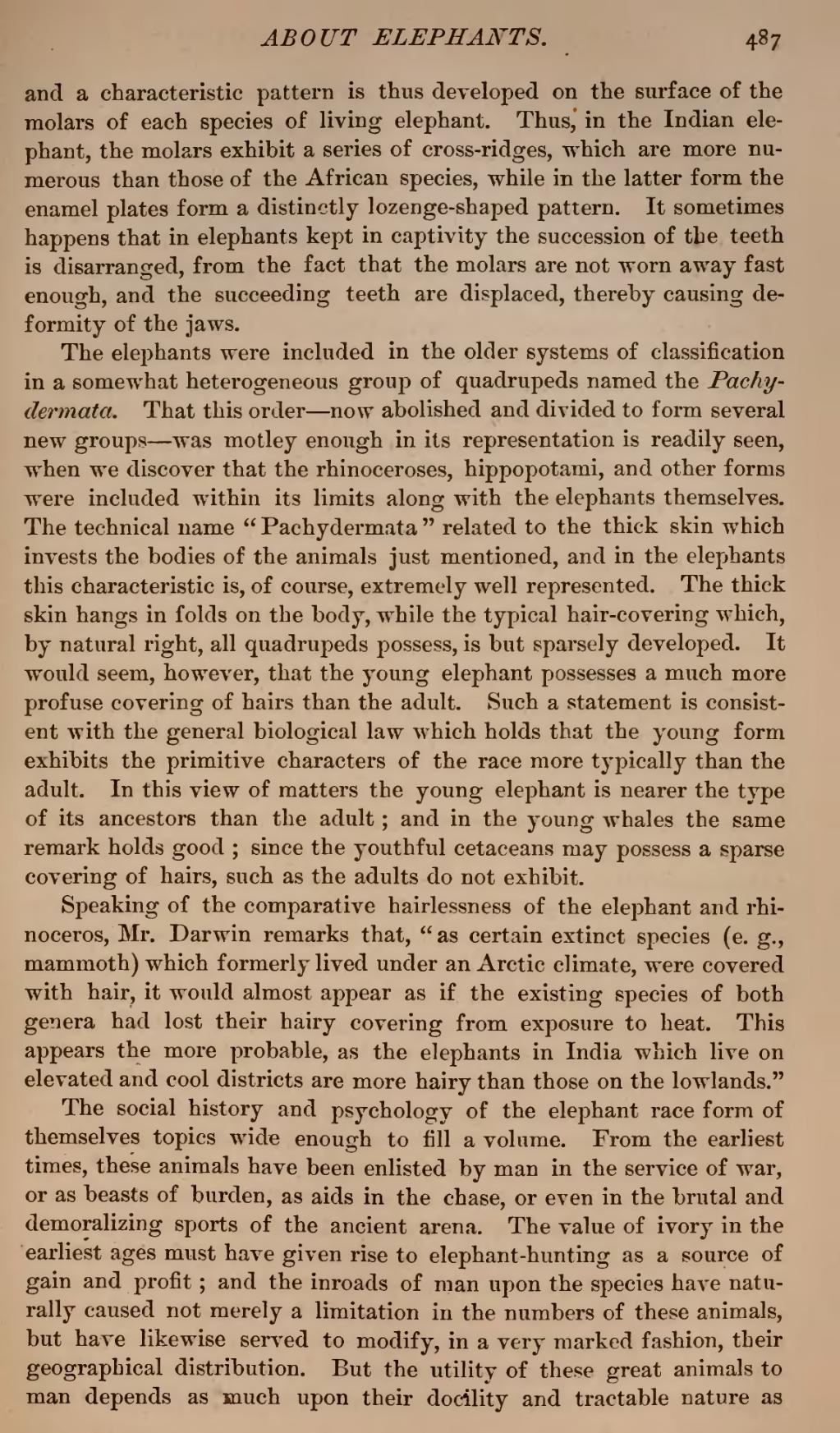and a characteristic pattern is thus developed on the surface of the molars of each species of living elephant. Thus, in the Indian elephant, the molars exhibit a series of cross-ridges, which are more numerous than those of the African species, while in the latter form the enamel plates form a distinctly lozenge-shaped pattern. It sometimes happens that in elephants kept in captivity the succession of the teeth is disarranged, from the fact that the molars are not worn away fast enough, and the succeeding teeth are displaced, thereby causing deformity of the jaws.
The elephants were included in the older systems of classification in a somewhat heterogeneous group of quadrupeds named the Pachydermata. That this order—now abolished and divided to form several new groups—was motley enough in its representation is readily seen, when we discover that the rhinoceroses, hippopotami, and other forms were included within its limits along with the elephants themselves. The technical name "Pachydermata" related to the thick skin which invests the bodies of the animals just mentioned, and in the elephants this characteristic is, of course, extremely well represented. The thick skin hangs in folds on the body, while the typical hair-covering which, by natural right, all quadrupeds possess, is but sparsely developed. It would seem, however, that the young elephant possesses a much more profuse covering of hairs than the adult. Such a statement is consistent with the general biological law which holds that the young form exhibits the primitive characters of the race more typically than the adult. In this view of matters the young elephant is nearer the type of its ancestors than the adult; and in the young whales the same remark holds good; since the youthful cetaceans may possess a sparse covering of hairs, such as the adults do not exhibit.
Speaking of the comparative hairlessness of the elephant and rhinoceros, Mr. Darwin remarks that, "as certain extinct species (e. g., mammoth) which formerly lived under an Arctic climate, were covered with hair, it would almost appear as if the existing species of both genera had lost their hairy covering from exposure to heat. This appears the more probable, as the elephants in India which live on elevated and cool districts are more hairy than those on the lowlands."
The social history and psychology of the elephant race form of themselves topics wide enough to fill a volume. From the earliest times, these animals have been enlisted by man in the service of war, or as beasts of burden, as aids in the chase, or even in the brutal and demoralizing sports of the ancient arena. The value of ivory in the earliest ages must have given rise to elephant-hunting as a source of gain and profit; and the inroads of man upon the species have naturally caused not merely a limitation in the numbers of these animals, but have likewise served to modify, in a very marked fashion, their geographical distribution. But the utility of these great animals to man depends as much upon their docility and tractable nature as

